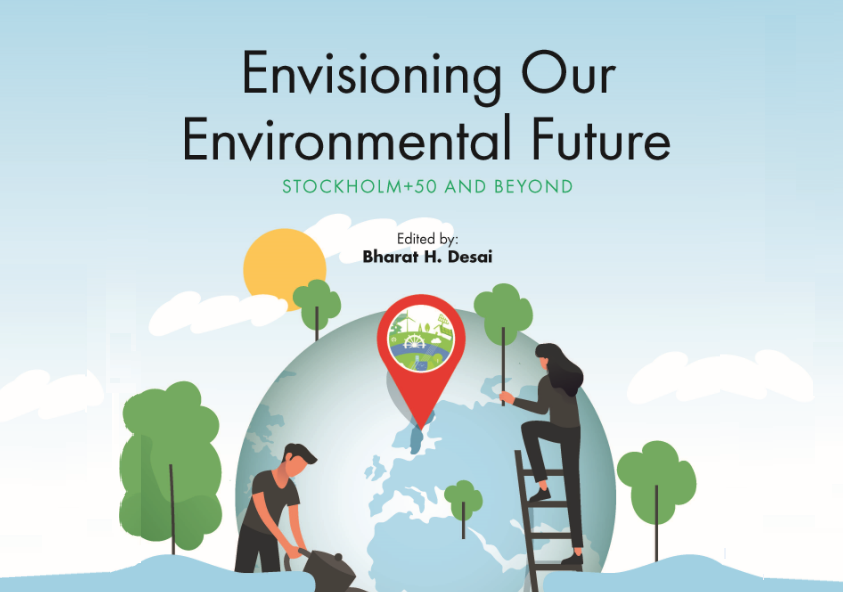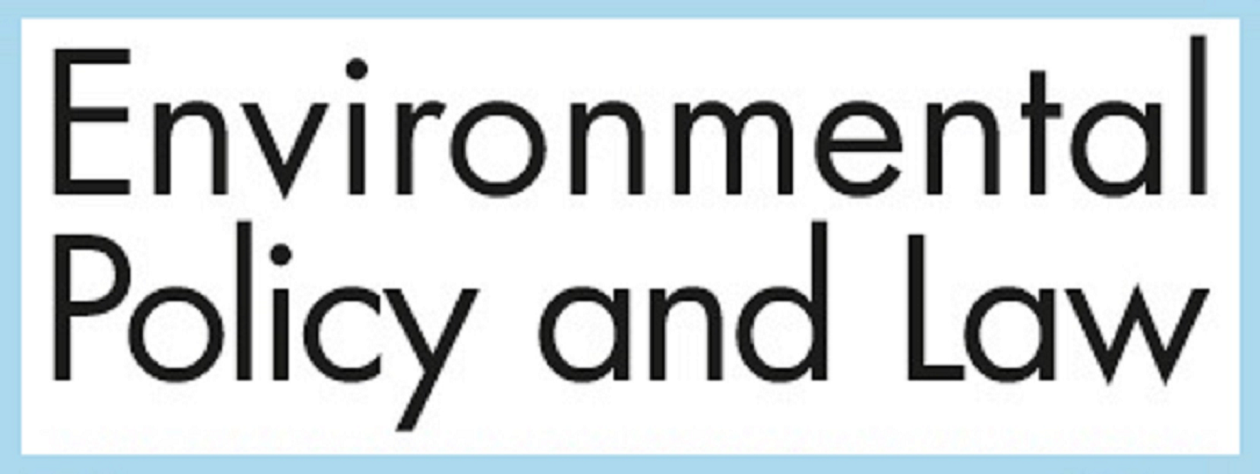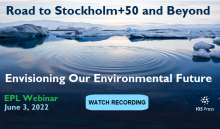
[Author: Bharat Desai, Jawaharlal Nehru University]
New Delhi, India – The first week of June 2022 became a rare “environment week” as it witnessed two back-to-back global environmental events prior to the World Environment Day (5 June): (i) the 50th anniversary celebration of the 1972 Stockholmwas Conference (2–3 June); and (ii) the 30th anniversary of the UN Framework Convention on Climate Change (4 June). What did these events portend for our common environmental future?
In his opening remarks on 2 June in Stockholm, the United Nations Secretary-General (UNSG) Antonio Guterres lamented about the grim environmental scenario that the global “wellbeing is at risk” and “the Earth’s natural systems cannot keep up with our demands.” He candidly admitted: “We haven’t kept our promises on the environment.” As the UNSG pleaded to “lead us out of this mess,” his clarion call to address the “triple planetary crisis” caused by the climate emergency seemed like a cry in the wilderness before the Stockholm audience.
Similarly, the executive director of the UN Environment Program, Inger Andersen asked as to what went wrong in the five decades (1972–2022), unashamedly stating: “If Indira Gandhi or Olof Palme were here today, what excuses would we offer up for our inadequate action? None that they would accept. They would tell us that further inaction is inexcusable.”

World problematique
The Stockholm+50 Conference remained a low-key affair. Ironically, the moral halo that ushered the world into global environmental consciousness at the Stockholm 1972 Conference seemed to be missing at the Stockholm 2022 Conference. It ended with a listless statement jointly issued by Sweden and Kenya, the two host countries. Instead of the much-expected uplifting Stockholm+50 declaration, it took the shape of a strange ten point “Presidents’ Final Remarks to Plenary” [1]. It didn’t cause any ripple, as didn’t issue a clarion call to shake the conscience of peoples and nations for averting the existential planetary crisis.
The Stockholm 2022 event was at best a timid acknowledgement of things going terribly wrong and lacked the courage for a decisive course correction. The time seemed to stand still with the “world problematique” prophesized in the 1972 book The Limits to Growth [2].
“Stockholm 2022 was at best a timid acknowledgement of things going terribly wrong and lacked the courage for a decisive course correction”
The predicament
The UN has put into practice the global conferencing technique. This began in Stockholm in 1972 and was followed by further discussions in Rio de Janeiro (1992), Johannesburg (2002), Rio de Janeiro (2012), and now Stockholm (2022). Notwithstanding all the global conferences – with mega regulatory processes, the involvement of numerous institutions, and spending of a staggering amount of funds – the global environmental conditions have only worsened. Was it really worth it?
The world seems to be in dire straits with the Sustainable Development Goals (SDGs) set to go haywire, alarming situation of chronic hunger (2021 Global Hunger Index), 2.37 billion people without access to adequate food (2021 FAO), uncertainty of meeting the 1.5 C GHG targets (2022 IPCC), and climate change exacerbating sexual and gender-based violence against women. The graphic description of “two worlds, two planets, two humanities” for the North–South divide by the economist Mahbub ul Haq before the Stockholm 1972 Conference still haunts the world. Gandhian (1908) warnings about choice between our needs and greed as well as lament of Tagore (1908) on “progress towards what and progress for whom” seems to have been left far behind. What went wrong?
Earth in the balance
The quagmire of global environmental crisis stares us in the face. This author’s 1992 audacious prediction [3] came true when COVID-19 pandemic hit: “If the current pace persists, people will be forced to move with gas masks in some of the mega-cities in the not-too-distant future.” With 7.9 billion (2022) world population expected to reach frightening levels of 10 billion (2050), one can only imagine the kind of life the future generations will inherit. Ironically, “human being has reached the moon but does not know how to live on the Earth” (former Indian PM Vajpayee).
As the world assembled again in the Swedish capital in 2022, the echo of the prediction of the Swedish Prime Minister (PM) Olof Palme on 6 June 1972 was recalled: “The decisive question is in which direction we will develop, by what means we will grow, which qualities we want to achieve, and what values we wish to guide our future…there is no individual future, neither for people nor for nations”. India was present at the “origin” (Stockholm 1972) with the Indian Delegation led by the PM Indira Gandhi. She drew attention to the wisdom from the Atharva Veda, thus: “What of thee I dig out; Let that quickly grow over; Let me not hit thy vitals or thy heart.” Of this event, Karan Singh, PhD, former JNU Chancellor, shared his recollections on 27 April 2022 with this author: “Indira Gandhi looked at the environment not from an elitist view point. She did it due to her genuine conviction.”

Envisioning our future
After 50 years, it is pertinent to assess the trajectory hitherto followed, assess what went wrong, and consider how we need to move forward. An ideational book curated by this author, Envisioning Our Environmental Future (to be published by IOS Press), has painstakingly brought together futuristic ideas of 22 outstanding scholars from the five continents to look beyond the Stockholm+50 (2022). It presents prognosis and prospects for extricating the world out of the global environmental morass for a better future in the 21st century and beyond. It is a sequel to another ideational work curated by the author with cutting-edge ideas of 21 outstanding scholars from around the world: Our Earth Matters [4].
The address of the Indian PM Narendra Modi, at the 75th anniversary of the UN General Assembly (2020) that “we cannot fight today’s challenges with outdated structures” holds relevance for comprehensive UN reforms. An explicit reference to “trusteeship of the planet” in the Indian PM’s address at the virtual G20 Riyadh Summit (2020) provides one such indication for a possible change (The Tribune, 2 December 2020). The 2021 report of the UNSG has alluded to such “repurposed” Trusteeship Council, mooted in this author’s lecture (15 January 1999) at the Legal Department of the World Bank DC. Will the UN member states embrace this idea to make the Trusteeship Council the principal instrumentality for the trusteeship of the planet? India can seize this opportunity to galvanize the world as a global solution provider.
The “Stockholm moment” of 2022 provided a unique opportunity to all the heads of government to go down in history. Ironically, no world leader stepped forward at the Stockholm 2022 Conference to don the mantle to lead the planet Earth out of the crisis of survival. As the 2020–2022 grueling spell of COVID-19 pandemic showed, Nature has her own ways of drawing the “limits” to our existence. Maybe it has been a wake-up call. One only hopes that peoples and nations come to their senses before it is too late.
This blog post was originally published on the Jawaharlal Nehru University’s website and appears here in an edited form (in accordance with EPL’s house style) with the author’s permission
References
1. A number of resource documents are available via the Stokholm+50 website; link.
2. Donella H. Meadows, Dennis L. Meadows, Jorgen Randers, and William W. Behrens III, The Limits to Growth (Universe Books: New York, 1972); link.
3. Bharat H. Desai, “Threats to the world eco-system: A role for the social scientists,” Social Science & Medicine, 35(4) 593 (1992).
4. Bharat H. Desai (Ed.), Our Earth Matters: Pathways to a Better Common Environmental Future (IOS Press: Amsterdam, 2021); link.


